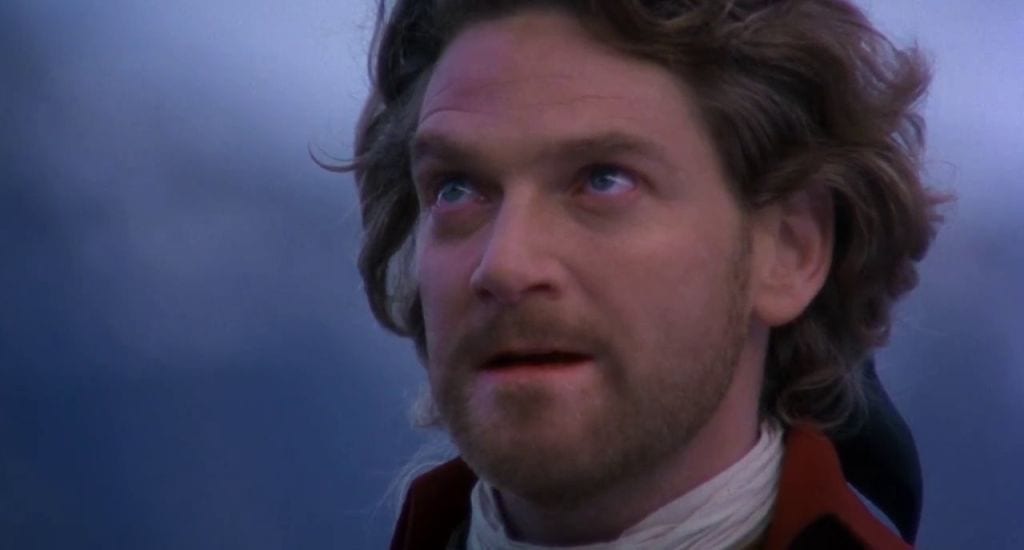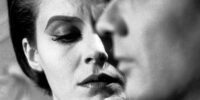“Accursed creator! Why did you form a monster so hideous that even you turned from me in disgust?” – Frankenstein, Mary Shelley
Frankenstein is a weird book.
Because of its status in popular culture, and in academia, I think it’s easy to forget how weird it is. Its iconography and twists and turns have been absorbed into our lexicon and they barely merit a passing mention anymore. Mad scientist? Disturbing creation? A storm raging on a wedding night? All of these were standard Gothic fare by the time Mel Brooks made Young Frankenstein in 1974, nevermind by the time Kenneth Branagh made Mary Shelley’s Frankenstein in 1994. They’d become stale, so Branagh had to come up with a new angle for his version.
The fact that he insists on it being Mary Shelley’s Frankenstein is perhaps the most interesting part of the film to me. He’s making a claim to an authenticity, to the film being rooted in a book deeply ensconced in the literary “Canon”. As opposed to the weird, perverse and hilarious Mel Brooks parody of other Frankenstein adaptations made over the years. By laying claim to the author’s name, Branagh is saying that this, his film, is the definitive adaptation of Shelley’s masterpiece, and is inextricably bound to the novel. But is it?
Well, no.

Mary Shelley’s Frankenstein wasn’t particularly well-received when it came out in ‘94, and it’s not like there’s been a massive critical reappraisal of it in subsequent years. Even the original screenwriter, Frank Darabont, called the film “the best script I ever wrote and the worst movie I’ve ever seen”. He’s wrong about the first, and almost certainly lying about the second, but I suppose some ego is in play.
The centre of the criticism of Branagh’s movie, in which he himself plays Victor Frankenstein opposite Robert De Niro’s Creature (this film is worth watching for the cast alone, nevermind the rest), is that there is no subtlety there. Critics called it “overwrought” and accused it of being overly melodramatic.
Both of which can, of course, apply to the source material. I’m not kidding when I say that Mary Shelley almost certainly lost her virginity on her mother’s grave, so “overwrought” and “melodramatic” might seem like appropriate stylistic choices in this context.
I first watched this film in English GCSE class—we were studying the novel, of course, so it was a treat once a week to watch half an hour of a film instead of making our way through a 200 year-old novel. To be honest, I was 15 at the time, so I don’t recall much of that initial viewing experience, being far more interested in gossiping with friends and doodling in my notebook. Nevertheless, imagery from the movie stayed with me—Helena Bonham Carter’s nightgown was fabulously ugly, and I found the Creature’s makeup to be striking and true to the book.
Even now, I find myself most happy with the aesthetics of the movie. And when talking about the adaptation of one of the most famous Romantic texts of all time, that’s not to be sniffed at. There are certainly things to enjoy about it as a movie; its ambition, for one, is to be respected. Its cast, costuming, and light design are all rather gorgeous. And, of course, Frankenstein itself will never go out of style.
But what it missed, and here’s where I believe most critics were way off the mark, was the novel’s weirdness. Frankenstein is way weirder than you remember. Victor’s father keeps a portrait of Victor’s dead mother standing next to a corpse above the mantelpiece. The Creature learns to read from Paradise Lost. Victor definitely marries Elizabeth for her money. The whole story is, technically speaking, told in a nesting doll of letter exchanges between an Arctic explorer and his sister. Part of the novel’s genius is that Mary Shelley commits so entirely to the premise and the aesthetic of her work that all of this comes together and makes a coherent experience. Branagh doesn’t manage to fully commit. Whereas Darabont and film critics of the time criticised the movie for being too unsubtle, for globbing together action/horror set-pieces in between character work that never quite leads anywhere, I’d rather see something that fully gets on board with how unsubtle and fun and absolutely bonkers the novel can be at times.
After all, if you are making a claim to Mary Shelley in your title, you had better make sure she’d approve of your creation.
So why then would I want to write about this film for 25 Years Later? More than anything, I respect its ambition. I respect the love Branagh clearly indulges for the source material, and I respect that it does what no other adaptation of this story has ever done before—put Mary Shelley back at the centre of her most famous creation.
Frankenstein is nothing without the story of its creator; a woman born to two of the late 18th Century’s most famous philosophers, and her mother a feminist icon who died in childbirth, who later ran off to Europe as a teenager with her married lover, Percy Shelley, and her step-sister, and spent the Summer of 1816 (the famous ‘Year Without a Summer’) living in Geneva, next door to Lord Byron, where they staged a ghost story competition of which Mary, of course, was the winner. To his credit, Branagh refuses to ignore this context, embedding the film with imagery and detail from Shelley’s novel. The context of Frankenstein’s creation is what is inextricably tied to the novel, at least for me, and Branagh understood that better than anyone else.
In many ways, this is the most true and faithful adaptation of Shelley’s masterpiece. Not in the sense of the aesthetic qualities, or its replication of the plot, but of how, on a meta-level, this film resembles the plot of Shelley’s novel.
Branagh, in an act of ego and desire to create something lasting, attempts to direct an adaptation of one of the most celebrated, revered works of literature in the world. But what he creates is a jumble of influences, patchworked together by sheer force of will. And so, it is rejected. Both by the community at large and, most hurtfully, its creator. Forced to limp along in pop culture history for years, dismissed as an embarrassing misstep and error.
The main difference is that there’s no parallel to that one great scene in the book and film where the Creature murders Elizabeth and poses her body for Victor to find. That was great and fun and silly.



This movie is a guilty pleasure of mine, I appreciate anyone who pays any attention to it that isn’t totally negative (I absolutely admit its flaws, which are many – but it’s still fun).